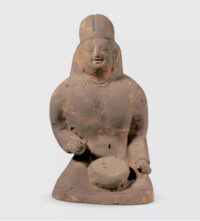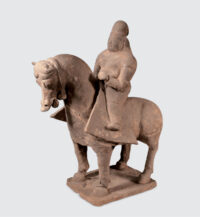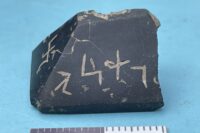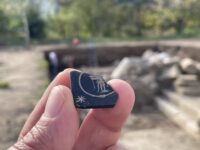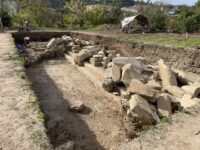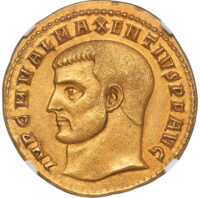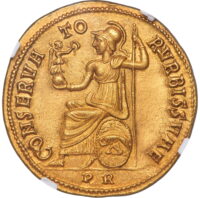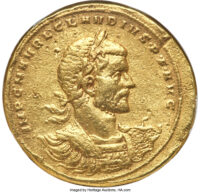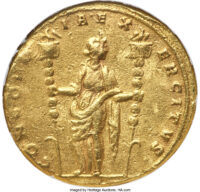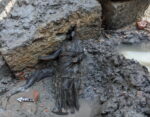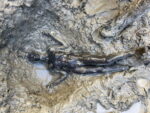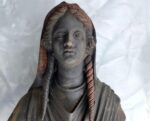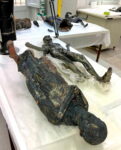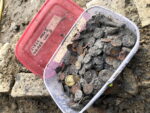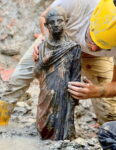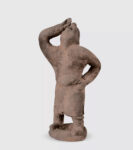 A tomb from the Northern Wei Dynasty (386-534 A.D.) containing a rich group of pottery figurines has been discovered in Datong, Shanxi province, northeastern China. Tomb 113, unearthed in the center of a group of tombs, contained dozens of burial objects, mostly earthenware figurines. The figurines are led by pottery horsemen. Behind them is a full entourage of labourers, animals, objects of daily life, bullock carts and 10 Hu figurines, musicians, acrobats and dancers posted in dynamic forms.
A tomb from the Northern Wei Dynasty (386-534 A.D.) containing a rich group of pottery figurines has been discovered in Datong, Shanxi province, northeastern China. Tomb 113, unearthed in the center of a group of tombs, contained dozens of burial objects, mostly earthenware figurines. The figurines are led by pottery horsemen. Behind them is a full entourage of labourers, animals, objects of daily life, bullock carts and 10 Hu figurines, musicians, acrobats and dancers posted in dynamic forms.
Typical of Hu figurines from the Northern Wei, the players have deep, wide-set eyes and short, high noses. They wear long robes with round necks and narrow sleeves. The robes have slits at the bottom 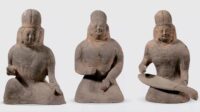 sides revealing the performers’ boots. A set of three female musicians is particularly striking. They are all seated and wearing a high cloche-shaped hat with a cross-shaped groove down the front and back. The hat is tied around the back of the head, and a little skirt covers the back of the neck underneath the hat’s tie.
sides revealing the performers’ boots. A set of three female musicians is particularly striking. They are all seated and wearing a high cloche-shaped hat with a cross-shaped groove down the front and back. The hat is tied around the back of the head, and a little skirt covers the back of the neck underneath the hat’s tie.
Pingcheng (modern-day Datong) was the capital of the Northern Wei Dyanasty from 398 until 494. Under pressure from drought, repeated famines and incursions from the proto-Mongolic Rouran Khaganate to 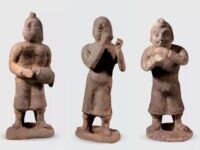 the north, Emperor Xiaowen moved the capital to Luoyang in 494 A.D. over the protests of his court. Luoyang had been a capital for several ruling dyasnties going back millennia and the Yellow River basin area was extensively settled and cultivated, unlike Pingcheng which was in the nomadic steppe. It remained a regional administrative center through the 520s, but its population and prosperity plummeted after the move.
the north, Emperor Xiaowen moved the capital to Luoyang in 494 A.D. over the protests of his court. Luoyang had been a capital for several ruling dyasnties going back millennia and the Yellow River basin area was extensively settled and cultivated, unlike Pingcheng which was in the nomadic steppe. It remained a regional administrative center through the 520s, but its population and prosperity plummeted after the move.
The quantity and quality of pottery found in Tomb 113 indicates he was someone of high status in Northern Wei society. The style of the pottery vessels date it to the last years of Pingcheng as the capital.
